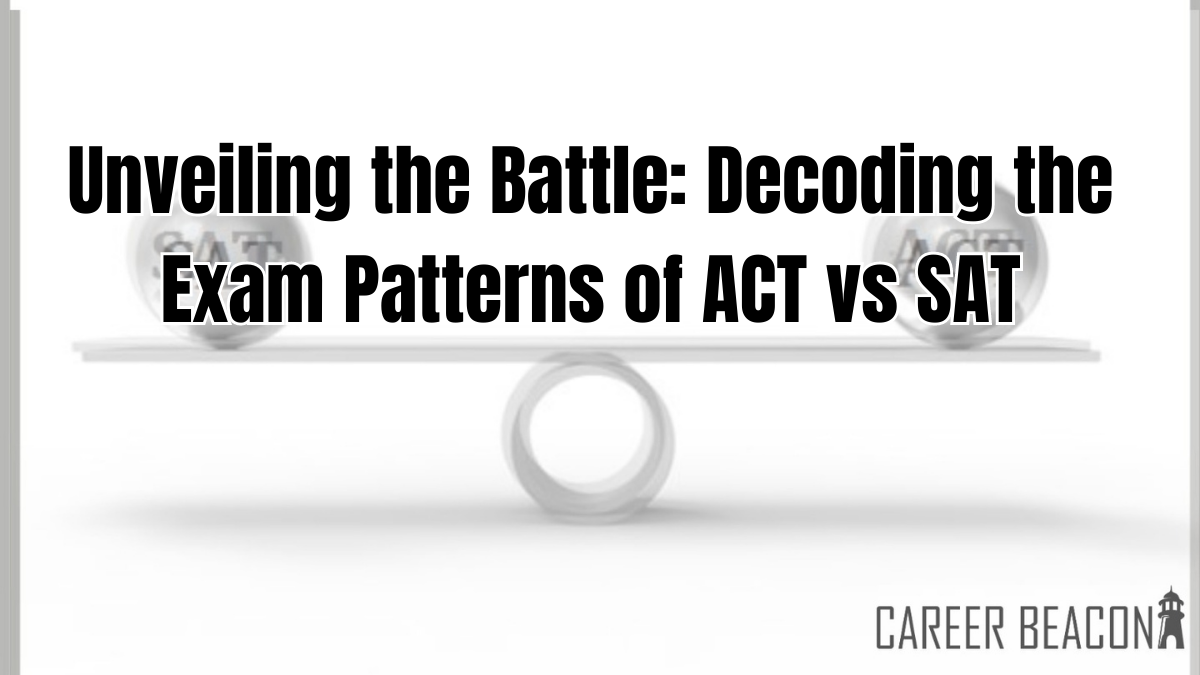
Unveiling the Battle: Decoding the Exam Patterns of ACT vs SAT
What is ACT vs SAT?
The ACT and SAT are standardized tests employed by colleges and universities in the US to evaluate a student’s knowledge and capabilities across different academic subjects as part of the admissions process. This evaluation is used to assess whether they possess the aptitude for college-level work.
Explanation of the ACT and SAT exams
The ACT: The ACT – also known as American College Testing – is a comprehensive exam with four required sections: English, Math, Reading, and Science. Additionally, there is an optional Writing section. On the English portion, students will be evaluated on aspects of grammar, punctuation and rhetoric. The Math content includes basic math skills to trigonometry. With the Reading component, comprehension and analysis come under scrutiny. Scientific reasoning and data interpretation are featured in the Science section and the Writing involves analyzing an issue and presenting one’s own perspective. A score of 1 to 36 is given for each section with the average across all four being taken as the Composite Score.
The SAT: The SAT, formerly known as the Scholastic Aptitude Test, is a universally accepted test that evaluates students’ skills and knowledge. It includes two sections: Evidence-Based Reading and Writing (EBRW) and Mathematics. In the EBRW section, passages are provided along with multiple-choice questions designed to assess reading comprehension, writing, and language expertise. The Math part covers topics like elementary arithmetic to algebra and geometry; it tests problem-solving abilities. An optional Essay portion is present too; students must analyze an argument in it. This exam is marked on a 400-1600 scale, with separate grades for the EBRW and Math sections.
Key similarities and differences between the ACT and SAT
Structure: The ACT and SAT are assessments of a student’s capabilities in English language arts and math. The ACT stands apart in its inclusion of a Science section not available on the SAT; whereas, the EBRW portion of the latter encompasses both reading and writing abilities, while the former has individual English and Reading sections.
Time and Pacing: The ACT has a quicker pace with more questions needing to be addressed within a given time frame than the SAT. Both tests call for good time management, yet the latter provides slightly more time per question on average.
Content Emphasis: The ACT places greater importance on grammar and punctuation, whilst the SAT has a larger concentration on vocabulary and understanding of texts. For Maths, the ACT covers a broader range of topics such as trigonometry and the SAT drills deeper into algebra and data analysis.
Understanding the purpose and importance of these tests
The ACT and SAT are standardized tests used by colleges to create a fair comparison between applicants from different schools and regions. These exams are just one component of the college admissions process, alongside other elements such as GPA, extracurricular activities, essays, and recommendation letters. Doing well on these tests can significantly improve a student’s prospects of enrollment into their desired universities and increase their access to scholarships, as it attests to their readiness for college courses.
It is valuable for students to comprehend the intention and distinctions between the ACT and SAT to make an informed judgment concerning which test to take. After properly prepping and doing well on the chosen exam, students can demonstrate their scholastic abilities and raise their opportunities of being admitted into their ideal colleges or universities.


